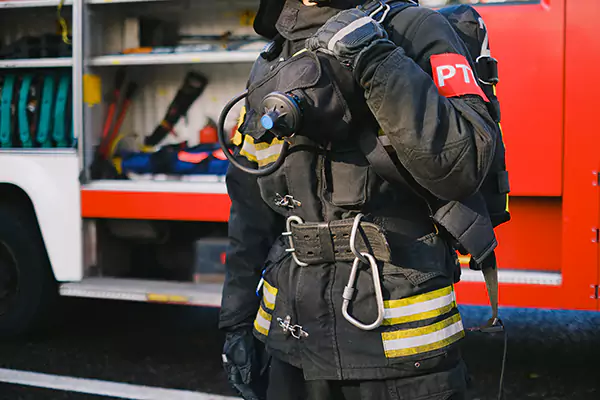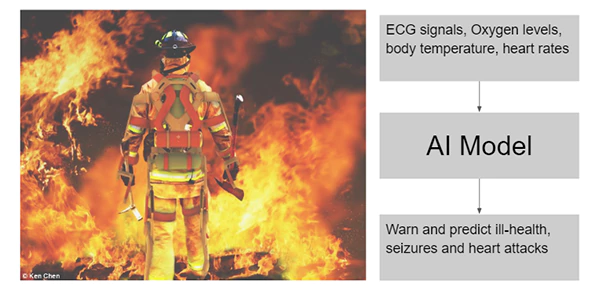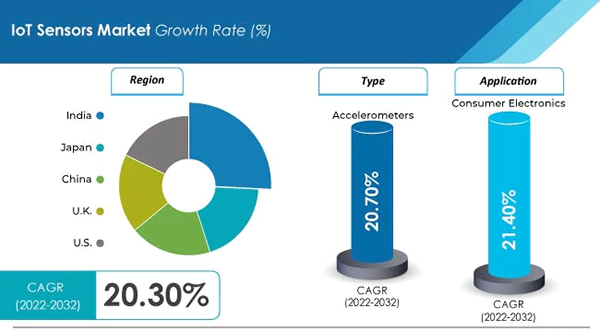In the dynamic realm of firefighting, the evolution of technologies has become a catalyst for transformative change.
The urgency of the matter becomes evident when we confront the stark realities of fire accidents and health issues.
Statista reported increased firefighter fatalities on duty in the United States, rising from 70 in the previous year to 96 in 2022.
Findings from Frontiers highlight the occupational exposure of firemen to carcinogenic chemicals in foam.
These chemicals potentially elevate their risk of developing various types of cancer. Notably, PFAS emerges as a significant class of carcinogenic chemicals to which firefighters are exposed as part of their occupational hazard.
Technology emerges as a beacon of hope in pursuit of safer and more effective firefighting solutions.
The integration of next-generation foam technologies, equipped with smart features and environmentally friendly compositions, promises enhanced fire control.
In addition, it heralds a proactive approach to mitigating health risks associated with traditional methods.
In this article, we will explore how these tech advancements are poised to address the pressing challenges they face worldwide.

In the evolving firefighting technology landscape, drones, or Unmanned Aerial Vehicles (UAVs), are becoming key assets in battling blazes.
IntechOpen notes that UAVs are widely used for surveillance across sectors, from wildlife management to fire behavior monitoring and package delivery in numerous countries.
Despite current constraints such as distance limitations and battery life, drones play a pivotal role in enhancing efforts when guided by human operators.
To overcome challenges like precise navigation and rapid obstacle avoidance, 3D area mapping has been proposed as a solution.
This innovation allows drones to follow predetermined paths, providing necessary insights into the external environment of the fire.
The significance of this technique becomes even more apparent when considering the ideal response time in firefighting scenarios—9 minutes and 20 seconds. This timeframe includes 14.3% turnout time and 85.7% travel time.
Autonomous drones and innovations like fire extinguisher balls promise to cut response times and enhance accessibility to incident scenes.
Exploring technology’s impact on, drone integration opens new frontiers for efficient surveillance, strategic decision-making, and, ultimately, more effective firefighting.
Did You Know?
A firefighter’s uniform is made of special materials that can withstand temperatures up to 2200 °F and protect a person from concentrated acids and alkali absorption

Artificial intelligence (AI) takes center stage, offering unprecedented fire prediction and control capabilities. Leveraging advanced algorithms and machine learning, AI systems analyze vast datasets to accurately predict fire outbreaks and behavior.
This foresight equips firefighting teams with key information to anticipate fire spread, enabling strategic resource allocation and preventive measures.
This precision ensures the deployment of resources precisely where they are needed most.
It not only enhances the efficiency of these operations but also minimizes risks to responders by providing data-driven decision support.
In firefighting, where hazards are abundant, and environments can be treacherous, robotics emerges as a revolutionary force.
Designed for unsafe conditions, robotic technologies are redefining the landscape of fire suppression with their ability to access areas too dangerous for human responders.
From dense smoke to confined spaces, these machines excel where human access may be limited or compromised.
Operators can safely control these robots, directing them into the heart of the fire or hazardous zones without immediate personal risk.
From precise flame extinguishment to reconnaissance in dangerous zones, they complement human responders with capabilities for unique tasks.
Amidst growing environmental concerns, the quest for sustainable firefighting solutions has given rise to biodegradable and environmentally friendly foamy alternatives.
These next-gen foams aim to strike a major balance between effective fire suppression and reduced ecological impact.
Innovations in this arena focus on minimizing the environmental footprint traditionally associated with it as it marks a pivotal shift towards greener and more responsible firefighting practices.
In stark contrast, TorHoerman Law states that traditional Aqueous Film-Forming Foam (AFFF) formulations, and effective in suppressing fires, but have raised significant health concerns.
Linked to various well-being issues, including cancers, these chemicals contain per- and poly-fluoroalkyl substances (PFAS) that pose potential risks to firemen.
The correlation between AF exposure and illness has intensified discussions around the need for safer alternatives.
It emphasizes the urgency for adopting biodegradable and environmentally friendly solutions.
In the firefighter’s world, firefighter foam cancer cases underscore the pressing need to address the health implications associated with the traditional type.
The integration of biodegradable alternatives aims to enhance firefighting efficiency by prioritizing the well-being of frontline firefighters.

IoT sensors leverage connectivity and real-time data analysis to revolutionize how fires are identified, enabling faster and more precise responses.
This proactive approach allows for early detection, minimizing the time between ignition and response.
This data-driven approach aids firefighters in understanding the dynamics of a fire, facilitating more informed decision-making.
Virtual Reality (VR) training emerges as a transformative tool, reshaping how firefighters prepare for the challenges of the field.
This immersive technology provides an unparalleled instructed experience, allowing firemen to simulate realistic scenarios and enhance their skills in a controlled virtual environment.
This realism provides firefighters with practical experience without exposing them to actual risks, ensuring they are better prepared for unpredictable situations.
This aspect of the training helps improve decision-making under pressure, a skill vital in emergencies.
This iterative learning process contributes to continuous improvement and readiness.
Verizon highlights that VR training for firemen is not only more cost effective than traditional methods but also offers several advantages, including:
In conclusion, the amalgamation of next-gen foam and cutting-edge technologies heralds a transformative era in firefighting.
From environmentally friendly solutions to the strategic incorporation of AI, robotics, and VR, these advancements redefine the landscape of fire suppression.
Navigating this intersection of technology reveals a safer, more efficient future, providing firefighters with unprecedented tools to protect lives and property.
It marks the dawn of a new chapter in firefighting, characterized by innovation, resilience, and an unwavering commitment to safeguarding communities.